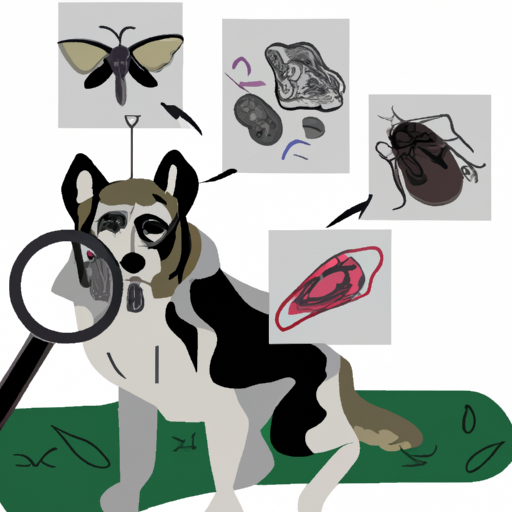Understanding the Botfly
Botflies, scientifically known as Dermatobia hominis, are a type of parasitic fly that can cause severe infections in a variety of mammals, including our four-legged friends. As a caregiver, it’s crucial for you to understand how these parasites function:
- Adult botflies lay their eggs on the body of a carrier, typically a mosquito, which unknowingly transports these eggs to the host.
- When the carrier lands on your dog’s skin, the eggs are triggered to hatch by the warmth and proximity to the host.
- The larvae burrow into the skin, creating a hole for oxygen and causing a raised, red sore.
Identifying Botfly Infections in Dogs
Botfly infections can be painful and distressing for your pet. Here are some common symptoms to watch out for:
- Swelling or redness around the infected area
- A hole in the skin with or without visible larvae
- Loss of appetite
- Lethargy
- Behavioral changes
Preventing Botfly Infections
While any dog can become a host to botflies, there are steps you can take to reduce the risk:
- Regular Vet Check-ups: Regular vet visits can help identify any potential infections early.
- Prompt Tick and Flea Treatment: Effective flea and tick control can help eliminate the carriers of botfly eggs.
- Avoiding Risky Areas: Forested or marshy areas are often botfly hotspots.
Treating Botfly Infections
If you suspect your dog has a botfly infection, it’s crucial to get them to a vet as soon as possible. Here’s a rough guide to what you can expect:
| Steps | Description |
|---|---|
| Examination | The vet will confirm the presence of a botfly larva. |
| Removal | The larva will be carefully extracted. |
| Cleaning | The wound will be thoroughly cleaned. |
| Medication | Your vet will likely prescribe a course of antibiotics. |
FAQs
1. Can botfly infections be fatal?
While botfly infections can be distressing and uncomfortable for your dog, they’re rarely fatal if treated promptly.
2. Can humans get botfly infections?
Yes, botflies can infect humans as well as dogs.
3. How long do botflies live under a dog’s skin?
A botfly larva can live and grow under a dog’s skin for up to 60 days.
4. Can I remove a botfly larva myself?
It’s not recommended to try and remove a botfly larva yourself as it can lead to further complications. Always consult a vet.
Remember, as a caregiver, your primary role is to ensure the well-being of your pet. Being aware of risks like botflies can help protect your dog from discomfort and potential harm.



